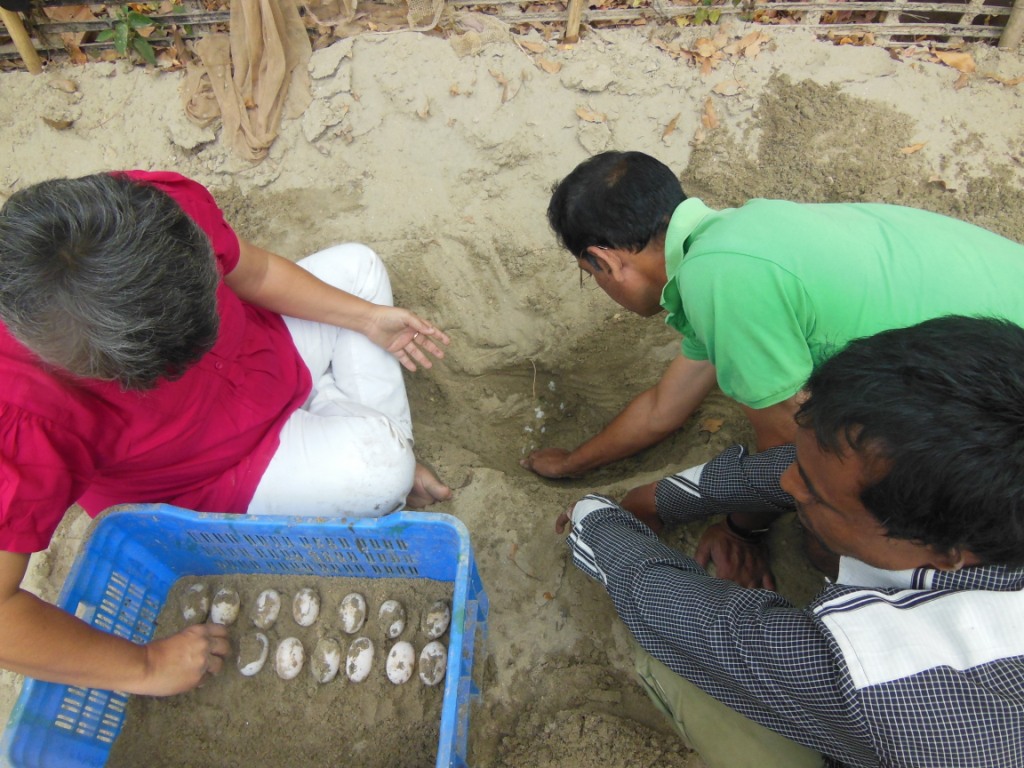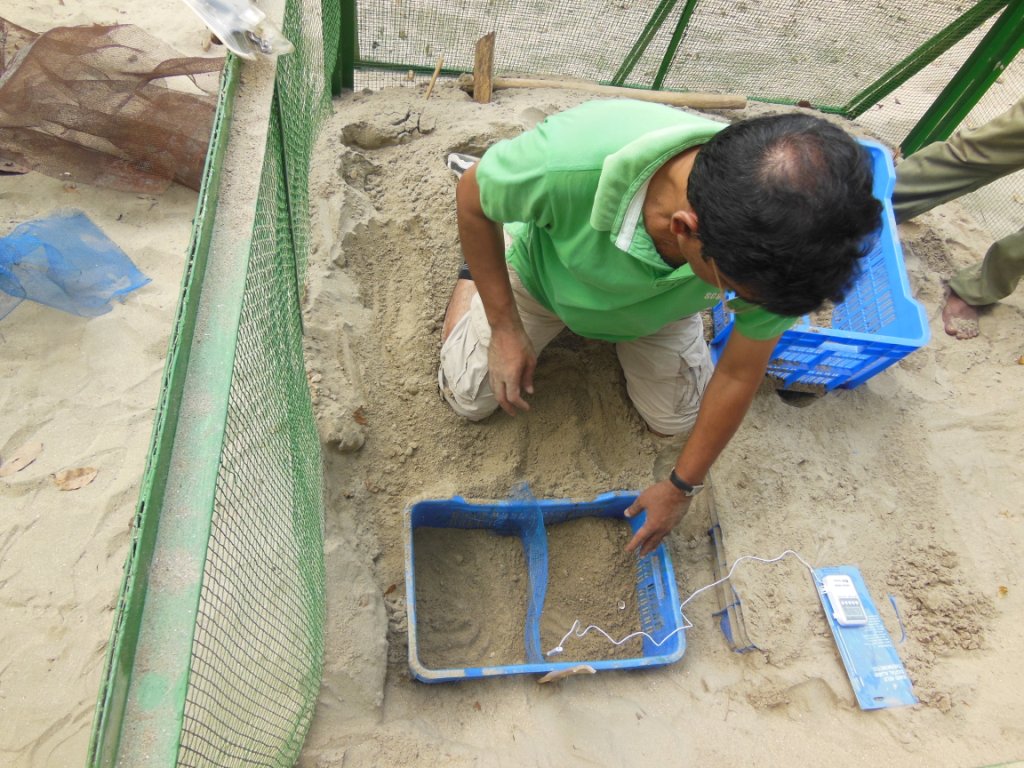River Terrapin Egg-Laying Season in Full Swing
by Rick Hudson 
 From Bangladesh to Cambodia, River Terrapins (Genus Batagur) are laying eggs - and lot of them - both in the wild and captivity. Below is a brief summary of River Terrapin nesting activity in programs managed by the TSA and their partners.
From Bangladesh to Cambodia, River Terrapins (Genus Batagur) are laying eggs - and lot of them - both in the wild and captivity. Below is a brief summary of River Terrapin nesting activity in programs managed by the TSA and their partners.
Northern River Terrapin or Sunderban Batagur (B. baska): In Bangladesh, at the captive breeding center at Bhawal National Park, the first nest (19 eggs) was laid March 21, followed by two more nests on March 23, consisting of 22 and 14 eggs respectively. Apparently one of the two females dug up another female's nest while laying her own so there was some breakage and egg loss. Project Coordinator Rupali Ghosh was on hand for the nest digging. This is a joint program of Turtle Survival Alliance, Vienna Zoo, Bangladesh Forest Department and our newest partner, IUCN Bangladesh. There are 14.5 adults in this breeding colony (14 males and five females).
 In India, at the B. baska breeding center at Sajnekhali, in West Bengal, TSA India Director Shai Singh reports that two females are emerging every night and making trial digs in the newly created nesting enclosure. Last year 50 total hatchlings emerged from these two Centers and we are hoping for a much better hatch rate this year. More good news: the Forest Department procured an additional adult female (22 kg) from a village pond in the northern Sunderbans, bringing the total number at Sajnekhali to 6.5.32 (six males, five females and 32 unknown).
In India, at the B. baska breeding center at Sajnekhali, in West Bengal, TSA India Director Shai Singh reports that two females are emerging every night and making trial digs in the newly created nesting enclosure. Last year 50 total hatchlings emerged from these two Centers and we are hoping for a much better hatch rate this year. More good news: the Forest Department procured an additional adult female (22 kg) from a village pond in the northern Sunderbans, bringing the total number at Sajnekhali to 6.5.32 (six males, five females and 32 unknown).
All total there are now 20 males, 10 females and 55 unsexed juveniles of this rare Batagur in captive centers in Indian and Bangladesh and the conservation outlook is looking much brighter that it was just a few years ago when this species was ranked #4 on the list of the Top 25 World's Most Endangered Turtles.
Indian Roofed Turtle (Batagur kachuga): Shai reports that there are approximately 135 Batagur nests under protection at the hatcheries on the National Chambal River Sanctuary, the majority of those B. dhongoka. The number of nesting females appears to be down this year, likely due to low rainfall, hence the sandbanks have not been restored. The TSA team is hoping for a spike in nesting soon.
Burmese Roofed Turtle (Batagur trivittata): The WCS / TSA team of Steve and Kalyar Platt report that 169 eggs from seven nests are now being protected on the Upper Chindwin River in Myanmar, numbers consistent with recent years. Rediscovered in 2002, there are now over 600 B. trivittata being maintained in two assurance colonies in central Myanmar and in the headstarting facility at Linpha Village on the Chindwin. Regarded as a model conservation success story, where wild and captive populations reinforce and support one another, reintroductions may get underway as early as next year. This is a joint program of the TSA and Widllife Conservation Society.
Southern River Terrapin (Batagur affinis): The Cambodian "race" of this species was rediscovered in 2000 and represents the only population of this formerly wide-ranging species remaining in Indochina. A WCS- managed nest protection and headstarting program has been underway since 2003, resulting in 270 hatchlings. Of those 136 are being headstarted in Cambodia and 140 were released back into the Sre Ambel River. This year two nests on the Sre Ambel - totaling 24 eggs - are being protected. WCS Director of Turtle Conservation Brian Horne reports that a new pond was recently completed at the Angkor Center for Conservation of Biodiversity, and a pair of wild-caught terrapins have been transferred there for breeding purposes.
 All of the aforementioned Batagur species will benefit greatly from a recent Save Our Species (SOS) grant to the TSA. This $150,000 grant will expand the existing programs over the next two years, with the goal of creating a regional model for conserving this highly endangered group of turtles. Five of the six species – 83% - are ranked Critically Endangered by the IUCN Red List and are largely dependent on intensive conservation actions to maintain their population numbers.
All of the aforementioned Batagur species will benefit greatly from a recent Save Our Species (SOS) grant to the TSA. This $150,000 grant will expand the existing programs over the next two years, with the goal of creating a regional model for conserving this highly endangered group of turtles. Five of the six species – 83% - are ranked Critically Endangered by the IUCN Red List and are largely dependent on intensive conservation actions to maintain their population numbers.
